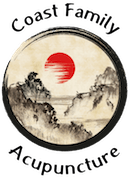Qi Gong and Tai Ji: Exercise / Lifestyle Therapy
We’ve all heard the scientific principle, “A body in motion stays in motion, and a body at rest stays at rest.” There are also two Chinese proverbs that teach us that a body in motion has a greater ability to be healthy, flexible, and free from pain.
“Flowing water never stagnates.” / “When a door is always in use, the hinges will never rust.”
For thousands of years the Chinese have integrated the ancient science of Qi Gong and Tai Ji into their health care model. With roots in martial arts, these therapies incorporate deep breathing, stretching, and slow movement to improve physical and mental well-being, increase energy and circulation, and promote a healthy balance between body and mind. Tai Ji and Qi Gong are low-impact exercises, and there is no level of athleticism or ability necessary to participate. In fact, Qi Gong is practiced by over 100 million people around the world, young and old, and it is swiftly gaining popularity in the U.S. In my community alone, there are dozens of Qi Gong classes offered every week.
Studies have shown that a regular Qi Gong or Tai Ji practice correlates with a wide range of health benefits, such as increased balance and flexibility, strengthened immune system, lowered blood pressure, improved respiratory function, reduction of cortisol (stress hormone), and a vast array of psychological and emotional benefits. A recent study (2011) in the Archives of Internal Medicine showed that heart failure patients had a greater quality of life and increased well-being if they maintained a regular Tai Ji practice.
As branches of exercise therapy, Tai Ji and Qi Gong are very similar. Teaching these exercises may be incorporated into a treatment plan by your acupuncturist. There may also be local classes available as well as books, DVDs and online videos that can help you establish a routine
Although not specifically a Chinese Medical Therapy, I often incorporate yoga as a treatment principle for my clients. Almost everyone can benefit from the deep breathing, stretching and mindful mediation of this ancient practice.
